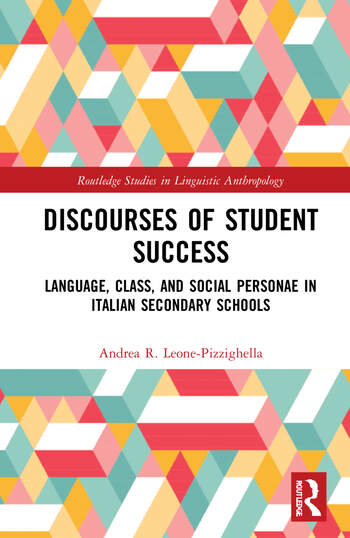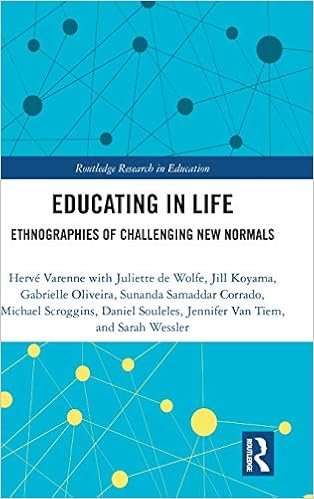
Interview by Ilana Gershon
Ilana Gershon: What was the moment that you realized that you had to write a book on what role diversity is now supposed to play in liberal arts education?
Bonnie Urciuoli: It was some years after I started the actual research which itself started by accident. In the early 1990s, I had begun my teaching career at a small, expensive, and quite white liberal arts college while finishing my first book (Exposing Prejudice) about New York Puerto Rican experiences of race, class, and language. I had several students who could have been from the families and neighborhoods of the people I worked with for that book, and we talked sometimes about their take on life at the college. Then I heard about a faculty member telling incoming bilingual students in their summer course for the Higher Education Opportunity Program that their writing was poor because they thought in Spanish. As I got to know these students, we started talking about being judged in racialized ways. These conversations led to interviews about coming to the college as Puerto Rican from the Bronx or Dominican from the Heights and then being reclassified – and learning to imagine oneself – as multicultural (diverse was not yet a widespread term) and as Hispanic or Latino/a (Latinx not yet a term at all). My first attempts to write this up were unsatisfying. Then I realized that while multicultural affairs administrators (in the student life office) tried to recognize and address issues faced by students of color, the offices of institutional advancement and admissions saw students of color as a resource for promoting the college and recruiting white students. This was the late 1990s, when the college branding and marketing industry was taking off. In conversations with my dear late colleague Henry Rutz, conversations that became for me an extended informal tutorial on the commodification of higher education, I came to see how notions of “diversity” had come to index market positioning for the promotion of liberal arts education. That’s probably when I understood that the core issue of the book, which I framed using Michael Silverstein’s semiotic approach, would be how elite liberal arts institutions work images of and stories about student ‘diversity’ into their marketing, part of a larger process targeting prospective students, parents, and donors who are overwhelmingly white.
IG: I am struck how much this neoliberal notion of diversity heavily depends on a particular understanding of race as the ur-example. How does it happen that race seems to be the template shaping what diversity becomes in the hands of higher education institutions?
BU: What I call neoliberal diversity derives from an understanding of race as an inherent characteristic of person that can be counted and visualized. It builds on and departs from older notions of race. Race, as the construction evolved over centuries of chattel slavery and colonizers’ appropriation of inhabitants’ land, resources, and labor, was construed as natural, inherited, hierarchic, and physically manifest. Race in the U.S. has been bureaucratized since 1790 as countable census units. It is now most widely counted using some form of the Office of Management and Budget (OMB or ‘affirmative action’) categories Black/African American, Hispanic/Latino, Asian/Pacific Islander, Native American, White. In the 1980s, the general term for non-white in undergraduate student life (and curricula) was multicultural(ism), emphasizing positive elements of identity and history. The neoliberal angle, promoted in the 1990s by diversity trainers to obscure associations with group identity and social justice, replaced use of affirmative action and multiculturalism with diversity, signifying valued resources brought to work by individual workers and obscuring historically embedded hierarchy. As neoliberal notions of diversity moved from the corporate world into higher education, they were taken up by offices of admission and college marketers playing to prospective white students, parents, and trustees with the message that diversity, in the form of students of color, added value to (white) students’ education. College marketers may talk about “all kinds of diversity” but they need students who look like they fit those OMB categories to count and show pictures of and tell inspiring stories about on the website.
Ilana Gershon: What would you want students of color at other colleges to know about how higher education structures diversity?
Bonnie Urciuoli: As will be news to no one, the primary social function of higher education, what it actually does, is not particularly student centered. So it will also be no surprise that higher education institutions use diversity in ways that benefit their own interests (as Sara Ahmed points out in On Being Included), just as they use any term or notion (community, changemaking, find your passion – to pick a few at random from college websites) meant to shape how they are perceived. Actual education and student welfare do not top this list. Given the market ordering of higher education (like any institution and organization) under conditions of contemporary capitalism, the primary function of terms favored by marketers is going to be promotional. But linguistic/semantic ideologies direct people to expect words to have ‘real’ (fixed, universal) meaning. One hears institutional talk about valuing diversity, and one might legitimately take value and diversity at (what one assumes to be) face value. I’d like all students anywhere to understand that point. I’d particularly like students of color anywhere to be suspicious as hell about the motives of higher education administrators, marketers, or for that matter faculty who forward institutional interests or their own interests through rhetoric that plays on student identities: they are unlikely to have students’ best interests at heart.
Ilana Gershon: Why do fraternities keep holding parties with questionable themes? What is it about whiteness in the context of this neoliberal institution with its particular version of diversity that fraternities are in relationship to in these parties?
Bonnie Urciuoli: The ‘Ethnic Night’ theme party (a racialized ethnicity) that I wrote about in chapter 5 got immediate stiff blowback and, as far as I know, it was the last one that fraternity gave. Why did they give it in the first place? Since I didn’t interview the members involved, I can only go by what I heard: they had given this theme party for years, they served food and drink and played music identified with that ethnic group, and attendees dressed as members of that ethnic group. (So far as I know, this did not involve blackface, which involves dynamics beyond what I cover here.) The question remains, when students do throw such parties, why don’t they think about the racialized ethnic stereotype in relation to whiteness? My answer, condensed from that chapter, is that most students at privileged schools, especially those who are socially unmarked (what the group involved regards as a typical or modal social identity, here middle-class white), are likely to see the sphere of the social as the sphere of fun (as Chaise LaDousa has masterfully analyzed in House Signs and Collegiate Fun). Fraternity life provides that sphere as autonomous and separate from ‘official’ college control, enhanced by alcohol and enacted through transgressive play. Unmarked people, students or not, are also likely to see racial issues in terms of personal intent (certainly not structure), and if no one ‘intended’ harm then no harm was done; hence participants disassociate theme parties from racism. They also dissociate them from any notion of diversity associated with school policy which has no place in the world of student fun.
The chapter also looks at a Bros and Hoes party given by a different fraternity. The Ethnic Night party generated a strong sense of moral outrage among faculty and students; the Bros and Hoes party provoked some but much less reaction. The difference, I suspect, lies in the dynamics of play with racial markedness versus with gender markedness. In Ethnic Night (and other race/ethnic themed) parties, unmarked students play at being marked. In Bros and Hoes parties, Hoes, marked relative to Bros, are performed by actual women exaggerating (often transgressively) the terms of that markedness. Women are thus participants (perhaps even party planners), whereas race/ethnic themed parties do not (usually) include marked participants playing stereotyped versions of themselves. One is tempted to see all this in terms of student morality, but it makes more analytic sense to consider what is indexed by the difference in markedness dynamics. White and non-white students are disconnected in ways that male and female students are not. The ‘fun’ stance grows from a secure social milieu in which people can choose who they want to be with, women along with men, though the footing is not altogether equal. Being an insider ‘playing’ with notions of race, class, ethnicity, or sex means not taking it seriously or as subject to critique. The critical stance grows from taking an outside perspective.
IG: What work do workshops do as the go-to genre for how institutions choose to address diversity in higher education?
BU: What I can talk about here are the diversity hiring workshops that the Dean of Faculty office required chairs of departments hiring new faculty to attend. Such workshops keep attention firmly disconnected from anything resembling actual history or group formation. They reinforce administrative authority and notions of diversity as beneficial to the institution. Institutions prefer to hire workshops from agencies that their peer institutions use (as agency websites make clear) rather than treat their own faculty as a source of expertise. A workshop’s success (again, as their websites tell you) is measured by outcome, for example, how many diversity hires the school makes after the workshop is given. Workshop messaging to faculty emphasizes how diversity hires enrich their departments, provide role models for students of color, and enhance institutional ‘excellence’: therefore, faculty must proceed with hires as directed by the workshop. The neoliberal message cannot be missed: diversity provides added value, and the more you hire, the more value you add. As to conditions and problems likely to be faced by faculty of color, or how their careers might be affected by the institution or the department – none of that comes up. Workshops also use double addressivity: their overt addressees are faculty; their covert addressees are administrators. They tell faculty what to do and they tell administrators that they recognize that the real problem is faculty who don’t know what to do; in other words, they are helping administrators discipline problem faculty. Above all, such workshops and the experts who run them base their expertise on not bringing historical/structural inequality into play in any systematic way. Their expertise is based on being able to solve problems by fixing what individuals (those problem faculty) do, not by addressing the ways in which inequalities are part of the institution. They are certainly not going to challenge the ways that institutions benefit from the same neoliberalized notions and practices that sustain their market position (and keep the workshop agencies in business).





